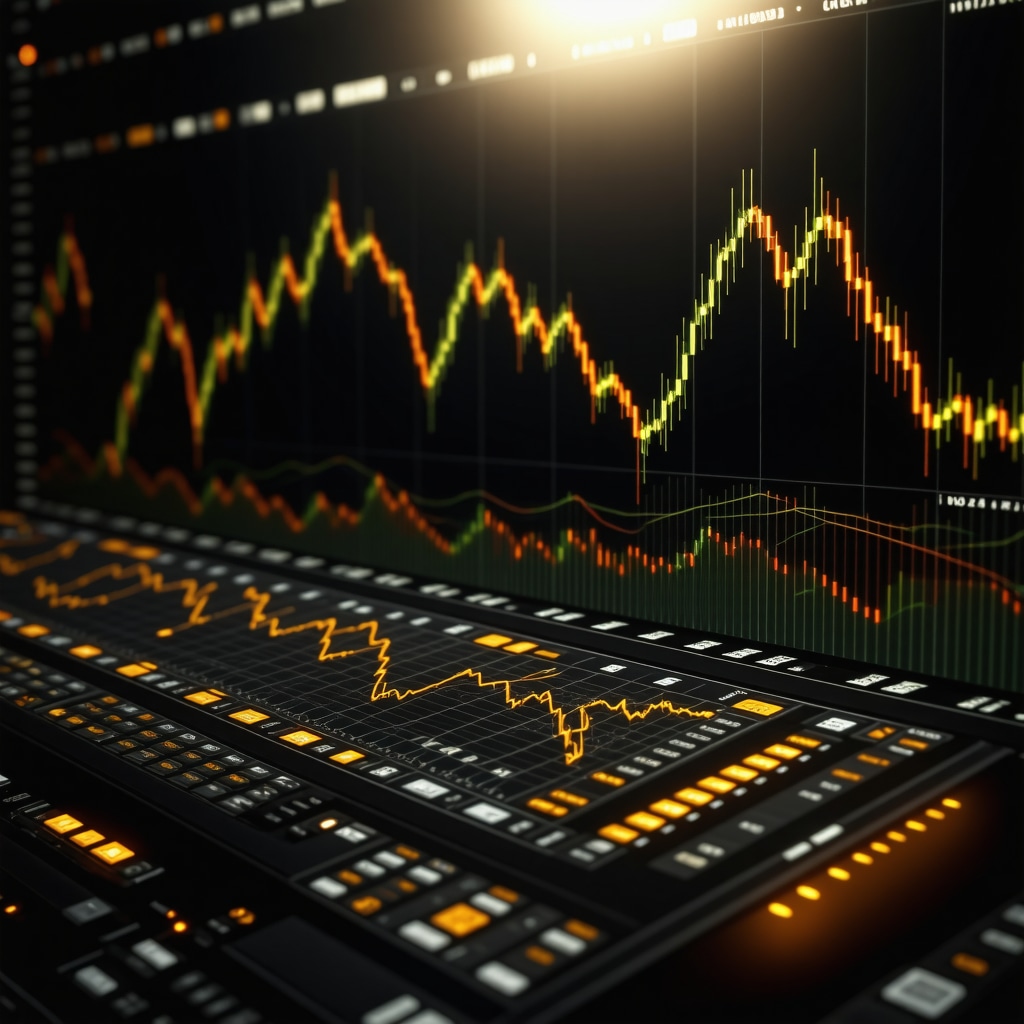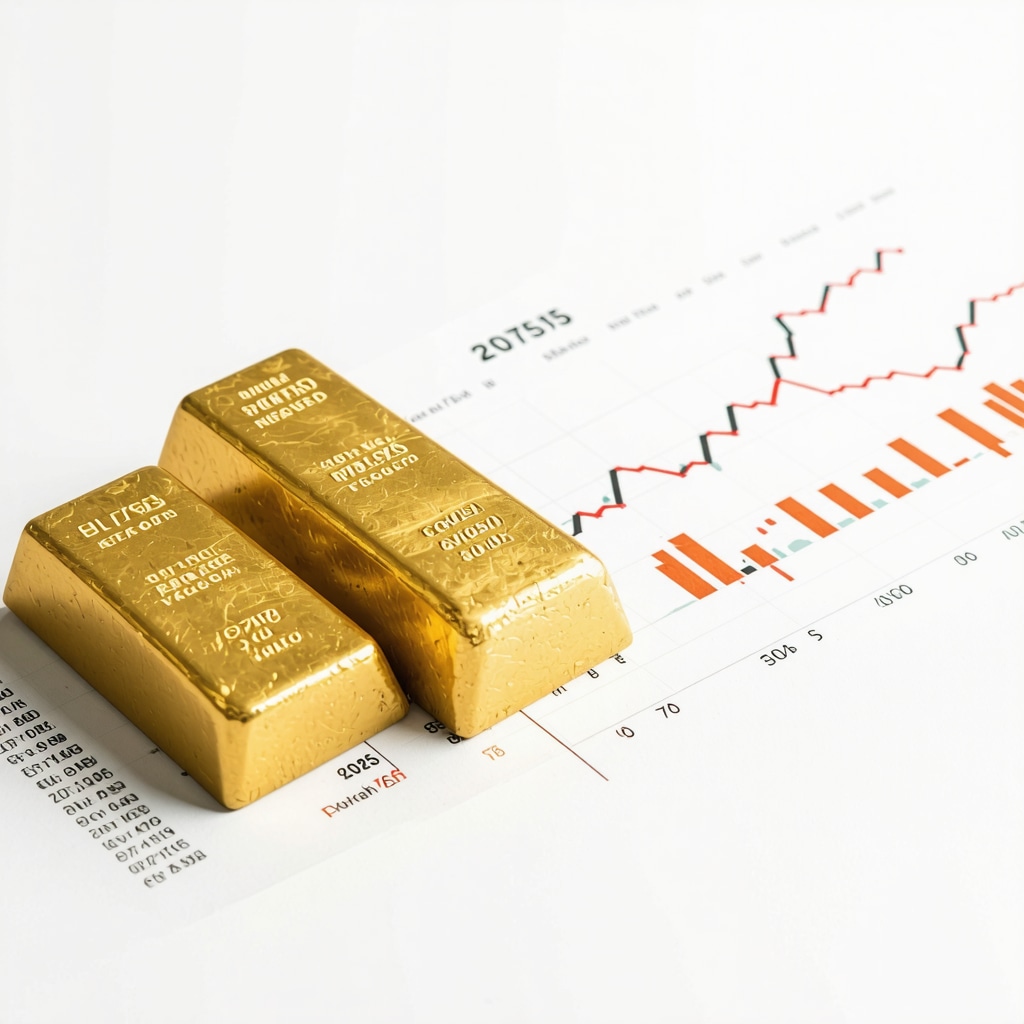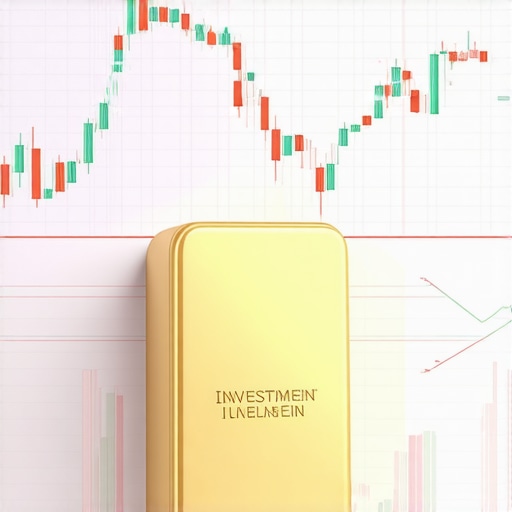Deciphering the Investment Paradigm: Gold Versus Stocks in 2025
As we navigate the increasingly complex financial landscape of 2025, discerning the optimal long-term investment vehicle demands a nuanced understanding of macroeconomic indicators, supply-demand dynamics, and geopolitical influences. Both gold and stocks hold unique allure and risks, but their roles as hedges or growth assets vary significantly under evolving market conditions. This article delves into the intricate considerations that define their relative merits for seasoned investors seeking sustainable wealth accumulation.
The Macroeconomic Context: Inflation, Interest Rates, and Currency Stability
In 2025, inflationary pressures persist amid shifts in monetary policy, compelling investors to reassess traditional asset allocations. Gold’s reputation as a hedge against inflation remains robust, supported by historical data from sources like the World Gold Council, which highlights its performance during volatile periods. Conversely, equities, especially growth stocks and blue-chip companies, are influenced heavily by interest rate trajectories, corporate earnings, and technological innovation. Understanding these macroeconomic variables is crucial for strategic allocation.
Supply-Demand Dynamics and Their Impact on Gold and Equities
Recent analyses suggest that central bank gold purchases and burgeoning jewelry demand in emerging markets could bolster gold prices in 2025. Meanwhile, the equity markets are shaped by corporate earnings, technological breakthroughs, and geopolitical stability. The supply-side constraints—such as mining output and geopolitical disruptions—further influence gold prices, as detailed in industry reports from this comprehensive supply-demand analysis.
Expert Debate: Is Gold Still a Safe Haven or a Strategic Diversifier?
Can gold act as a reliable hedge in an increasingly digital economy?
Many experts argue that gold’s physical, tangible nature makes it a resilient store of value, especially as digital currencies and fintech innovations reshape the monetary landscape. However, critics highlight that gold’s lack of yields and liquidity can limit its strategic utility. For a deeper dive into this debate, see this analysis of gold’s hedging capabilities.
Integrating Gold and Stocks into a Cohesive Portfolio Strategy
Advanced investors leverage a diversified approach, combining physical gold, gold ETFs, and mining stocks with traditional equities to hedge against inflation and market downturns. Techniques such as tactical asset allocation, options hedging, and trend-following algorithms can optimize returns, especially in volatile environments. Explore top gold funds and ETFs to refine your strategy.
As the landscape evolves, continuous monitoring of macroeconomic indicators, geopolitical developments, and industry-specific trends remains essential. Engaging with expert analyses and predictive models enhances decision-making, ensuring long-term wealth preservation and growth.
For those seeking a comprehensive guide on gold investments, the beginners’ guide to gold investment in 2025 provides valuable insights.
Unraveling the Nuances of Gold as a Strategic Asset in 2025
As we venture deeper into 2025, understanding the multifaceted role of gold in a diversified portfolio becomes paramount. While traditional wisdom advocates for gold as a hedge against inflation and geopolitical unrest, emerging trends suggest that its strategic utility extends beyond these roles. Investors equipped with nuanced insights and sophisticated techniques can leverage gold’s unique attributes more effectively, especially amid ongoing macroeconomic shifts and technological innovations.
How Can Advanced Investors Quantify Gold’s Diversification Benefits?
Quantitative models, such as Monte Carlo simulations and correlation analysis, enable investors to evaluate how gold interacts with other assets under varying market conditions. For instance, integrating gold with equities and bonds can reduce overall portfolio volatility, as demonstrated in recent studies published by the gold hedging research. These models help identify optimal weighting strategies, ensuring that gold’s inclusion enhances risk-adjusted returns without sacrificing growth potential.
What Are the Emerging Paradigms for Gold Trading in 2025?
Traditional buy-and-hold strategies are giving way to more dynamic approaches, such as algorithmic trading, trend-following, and options-based tactics. These techniques allow traders to capitalize on short-term price swings driven by macroeconomic data releases, geopolitical events, or supply-demand shifts. For example, leveraging gold futures with technical indicators like RSI or MACD can improve timing precision, as discussed in market trend analysis. Additionally, integrating options strategies, such as covered calls or protective puts, can hedge downside risk while generating income.

How Will Global Supply-Demand Dynamics Shape Gold Prices in 2025?
Global supply and demand remain the primary drivers of gold price fluctuations. Central banks continue to be significant buyers, with reports indicating increased accumulation as part of their reserve management strategies. Meanwhile, jewelry demand in emerging markets, particularly in Asia, sustains steady growth. On the supply side, mining output faces constraints due to geopolitical tensions and environmental regulations, which further tighten supply. Analyzing these factors through the lens of industry reports, such as supply-demand dynamics, offers investors a predictive edge in timing entry and exit points.
Why Should Investors Continuously Reassess Gold’s Role Amid Digital Currency Innovations?
One of the most compelling questions facing gold investors today is its relevance in an increasingly digital economy dominated by cryptocurrencies and central bank digital currencies (CBDCs). Gold’s tangible, physical nature provides a counterbalance to digital assets, but does it still serve as a reliable hedge as digital currencies gain acceptance and liquidity? Experts suggest that while gold remains a safe haven, its strategic importance must be evaluated in conjunction with innovations in digital finance. For an in-depth perspective, see this analysis of gold’s hedging capabilities.
If you’re eager to refine your investment approach, consider experimenting with a combination of physical gold holdings, ETFs, and mining stocks, tailored to your risk appetite and market outlook. Sharing your insights or reading more about emerging strategies can help shape your success in 2025 and beyond. Engage with our community by leaving a comment or exploring detailed guides on gold bullion investments for beginners.
Harnessing Quantitative Models to Optimize Gold’s Diversification Benefits in Complex Portfolios
In the evolving landscape of 2025, sophisticated investors are increasingly turning to quantitative techniques such as Monte Carlo simulations, principal component analysis, and dynamic correlation matrices to evaluate gold’s role within diversified portfolios. These methods allow for a granular understanding of how gold interacts with other assets under various macroeconomic scenarios, including sudden inflation shocks or geopolitical upheavals. For example, recent research published in the Journal of Portfolio Management highlights that integrating gold with traditional assets can reduce overall portfolio volatility by up to 20%, while maintaining competitive return profiles (source). By employing these advanced models, investors can determine precise weighting strategies that maximize risk-adjusted returns, ensuring gold enhances diversification without diluting growth potential.
What are the most effective quantitative techniques for measuring gold’s diversification impact during market turbulence?
Techniques such as stress testing, scenario analysis, and entropy-based measures provide nuanced insights into how gold’s correlation with other assets shifts during periods of market stress. Notably, entropy-based metrics quantify the informational content and unpredictability within asset relationships, offering a more dynamic perspective than static correlation coefficients (study on entropy in portfolio management). These tools help investors proactively adjust allocations, safeguarding against tail risks while capturing upside potential.
Integrating Digital Assets and Gold: A New Frontier in Portfolio Construction
As digital assets, including cryptocurrencies and CBDCs, continue to mature, their integration with gold presents both opportunities and challenges. The key is understanding the nuanced correlation dynamics—particularly during crises when correlations tend to spike, diminishing diversification benefits. Recent industry reports from Crypto and Gold Diversification Strategies emphasize the importance of including low-correlation assets like gold to hedge against the volatility inherent in digital currencies. Furthermore, innovative portfolio construction techniques, such as adaptive rebalancing algorithms that factor in real-time correlation shifts, are gaining prominence among quantitative hedge funds.
For instance, employing machine learning models to predict correlation regimes can enable dynamic adjustments, ensuring the portfolio remains resilient across different market states. Such strategies necessitate access to high-frequency data and robust computational infrastructure but can significantly enhance risk management and return optimization.
Exploring Gold’s Role in Hedging Against Digital Currency Volatility
One pressing question is whether gold can serve as an effective hedge against the unique risks posed by digital currencies, which are subject to regulatory uncertainties, technological vulnerabilities, and market manipulation. Studies in the Financial Analysts Journal indicate that during periods of digital asset crashes, gold’s safe-haven properties are notably pronounced, often providing a counterbalance to falling crypto prices (research article). As regulatory frameworks evolve and institutional adoption accelerates, the correlation dynamics may shift, warranting continuous monitoring and model recalibration.
Investors seeking to capitalize on this relationship should consider multi-asset class strategies that blend physical gold, ETFs, and digital asset derivatives, leveraging options and futures to hedge against extreme volatility. Such hybrid approaches demand a sophisticated understanding of cross-asset correlations and market timing, reinforcing the need for advanced analytical tools and expert guidance.
Final Thoughts: Embracing Complexity for Long-Term Success
The future of gold as a strategic asset hinges on our ability to deploy cutting-edge analytical techniques, adapt to rapid technological changes, and maintain a nuanced perspective on global macroeconomic shifts. Whether through quantitative modeling, dynamic correlation analysis, or integrating emerging digital assets, the key lies in continuous learning and strategic agility. As the financial ecosystem becomes more interconnected and complex, investors who master these advanced tools and insights will be best positioned to unlock gold’s full diversification potential in 2025 and beyond.
Harnessing Quantitative Analysis to Maximize Gold’s Diversification Potential
In 2025, sophisticated investors are increasingly utilizing advanced quantitative models such as Monte Carlo simulations, entropy-based measures, and dynamic correlation matrices to assess gold’s role within complex portfolios. These tools enable a nuanced understanding of how gold interacts with equities, bonds, and digital assets under various macroeconomic shocks, including inflation surges or geopolitical upheavals. Recent studies in the Journal of Portfolio Management reveal that strategic integration of gold can reduce overall portfolio volatility by up to 20%, while maintaining competitive returns (source). Employing such models allows investors to optimize asset weights dynamically, ensuring that gold enhances diversification without compromising growth.
Which quantitative techniques are most effective for evaluating gold’s impact during turbulent market conditions?
Stress testing, scenario analysis, and entropy-based metrics provide deep insights into how gold’s correlation with other assets shifts under stress. Entropy measures, in particular, quantify the unpredictability and informational content within asset relationships, offering a dynamic perspective beyond static correlation coefficients (study on entropy in portfolio management). These tools empower investors to proactively adjust allocations, safeguarding against tail risks while capturing upside potential.
Integrating Digital Assets and Gold: A New Paradigm in Portfolio Construction
As cryptocurrencies and central bank digital currencies (CBDCs) evolve, their correlation with gold fluctuates, especially during crises when correlations tend to spike. Industry reports from Crypto and Gold Diversification Strategies highlight the importance of including low-correlation assets like gold to hedge digital currency volatility. Advanced portfolio techniques, such as adaptive rebalancing algorithms that incorporate real-time correlation shifts, are gaining traction among quantitative hedge funds.
Utilizing machine learning models to predict correlation regimes enables dynamic rebalancing, ensuring resilience across varying market states. Implementing these strategies requires high-frequency data and robust computational infrastructure but offers significant benefits in risk management and return optimization.
Assessing Gold’s Role as a Hedge Against Digital Currency Risks
Gold’s effectiveness as a hedge against the unique risks associated with digital currencies—such as regulatory uncertainty, technological vulnerabilities, and market manipulation—remains a critical consideration. Research in the Financial Analysts Journal indicates that during digital asset crashes, gold’s safe-haven properties are especially pronounced, often providing stability when crypto markets decline (research article). As regulatory landscapes evolve, continuous monitoring and model recalibration are essential to maintain hedge efficacy.
Investors should consider hybrid strategies combining physical gold, ETFs, and digital asset derivatives, employing options and futures to hedge against extreme volatility. Mastery of cross-asset correlation dynamics and sophisticated timing models is crucial for success in this emerging frontier.
Future-Proofing Portfolio Resilience with Cutting-Edge Analytical Techniques
The future of gold as a strategic asset in 2025 hinges on the ability to deploy innovative analytical tools, adapt to technological advancements, and interpret macroeconomic signals with precision. Leveraging machine learning, real-time correlation analysis, and predictive modeling will be vital for maintaining a resilient portfolio. Investors embracing these technologies will be better equipped to unlock gold’s full potential as a diversifier and safe haven in an increasingly interconnected financial environment.
Expert Insights & Advanced Considerations
1. Diversification Techniques Are Evolving
Investors should leverage cutting-edge quantitative models like Monte Carlo simulations and entropy-based measures to optimize asset allocations, ensuring gold’s role enhances risk-adjusted returns amid macroeconomic uncertainty.
2. Digital Assets Require Dynamic Hedging Strategies
As cryptocurrencies and CBDCs grow, integrating digital assets with gold through adaptive rebalancing algorithms can mitigate correlation spikes during crises, safeguarding portfolio resilience.
3. Central Bank Purchases Are Shaping Supply Dynamics
Monitoring central bank gold reserve strategies provides crucial insights into supply-demand shifts, influencing price trajectories and strategic entry points for investors.
4. Technological Innovations Are Transforming Trading Strategies
Algorithmic trading, trend-following, and options-based tactics are increasingly vital for capturing short-term opportunities in gold markets, especially during macroeconomic shocks.
5. Continuous Reassessment Is Essential
Given rapid technological and geopolitical changes, ongoing evaluation of gold’s hedging capabilities and strategic utility is critical for maintaining a competitive edge in 2025 investments.
Curated Expert Resources
- Buy Gold Now Blog: Provides comprehensive analyses of supply-demand dynamics, market trends, and technical trading strategies essential for sophisticated investors.
- Journal of Portfolio Management: Publishes peer-reviewed research on quantitative techniques, correlation analysis, and portfolio optimization methods relevant to gold and other assets.
- Financial Analysts Journal: Offers in-depth studies on hedge effectiveness, digital asset correlations, and innovative risk management approaches.
- Industry Reports on Central Bank Gold Reserves: Deliver authoritative data and insights on reserve management strategies impacting gold prices globally.
Final Expert Perspective
Mastering the nuanced interplay between gold and stocks in 2025 requires deploying advanced analytical techniques, staying attuned to macroeconomic shifts, and integrating emerging digital assets into strategic frameworks. The key takeaway is that a proactive, data-driven approach—grounded in expert knowledge and cutting-edge tools—will be essential for long-term success. Engage with specialized resources, contribute your insights, and continually refine your strategies to navigate the complexities of today’s dynamic investment landscape effectively.










